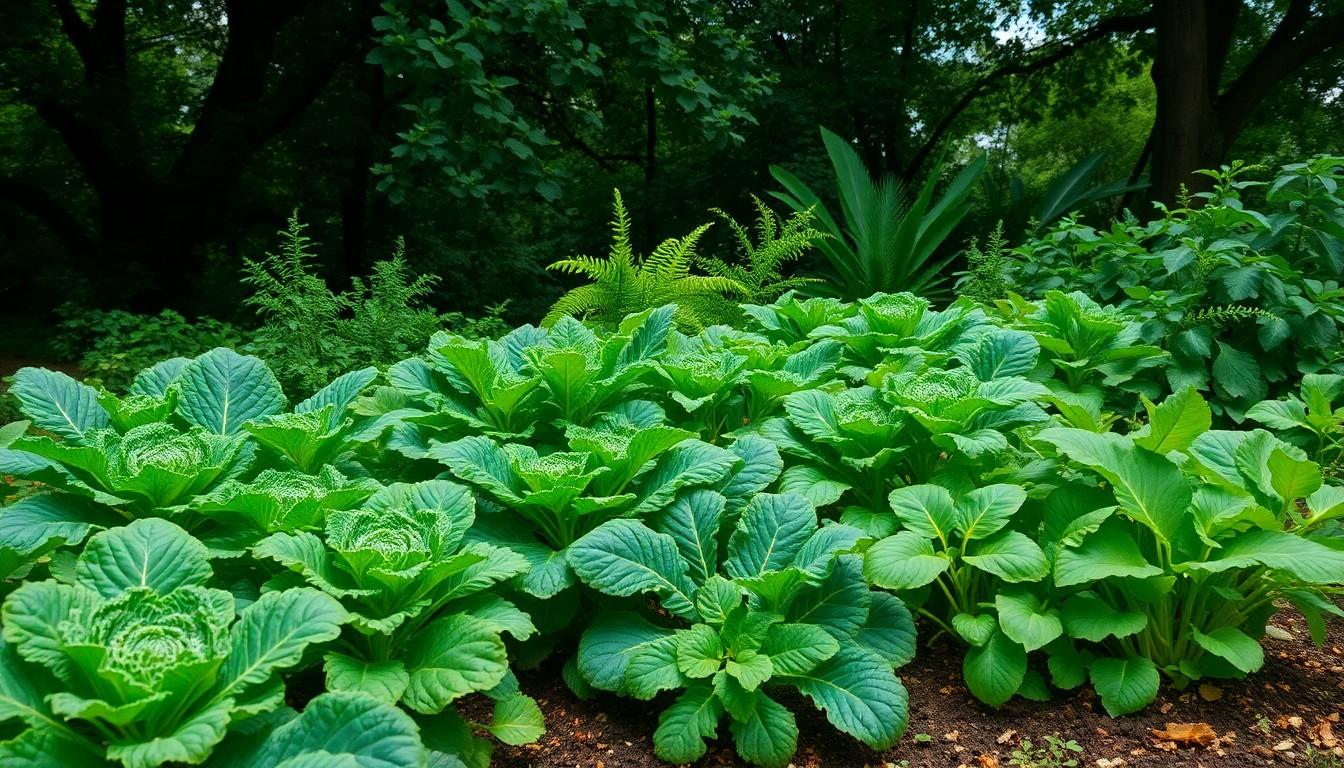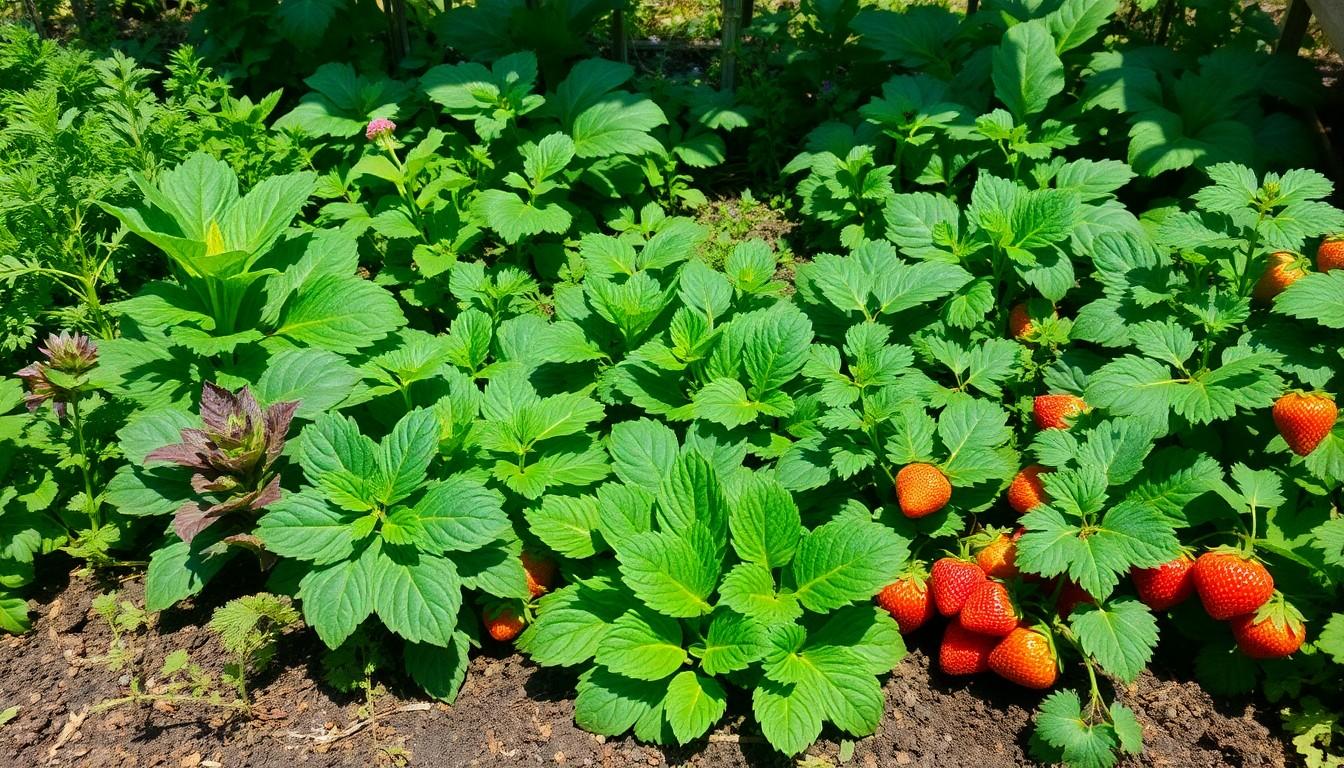Imagine stepping into your garden and discovering a lush oasis where the sun’s rays play hide and seek. Edible shade plants are the unsung heroes of the gardening world, proving that you don’t need a sun-soaked plot to grow delicious greens. These leafy wonders thrive in the cool embrace of shade, transforming your yard into a culinary paradise without breaking a sweat.
Edible Shade Plants
Edible shade plants thrive in low-light environments, making them perfect for gardens that receive limited sunlight. Typically, these plants tolerate partial or full shade conditions well, allowing them to flourish where many traditional crops fail. Popular examples include leafy greens, herbs, and certain root vegetables that successfully grow in shaded spaces.
Vegetables like spinach and kale exhibit high shade tolerance. They produce nutritious leaves even with minimal light exposure. Herbs, such as parsley and cilantro, also adapt well to shady conditions, offering flavor and aroma to culinary dishes. Additionally, plants like chives and mint can spread easily in less sunny areas, contributing to diverse garden biodiversity.
Gardeners can maximize productivity by selecting the right shade plants. Some edible shade plants not only enhance the garden’s aesthetic but also provide various soil benefits. For instance, ground covers like creeping thyme reduce erosion while supplying edible greens.
Factors influencing the growth of these plants include soil quality, moisture levels, and neighboring vegetation. When positioned correctly, edible shade plants create multiple layers in a garden, utilizing vertical space effectively. They can coexist with taller plants while still receiving sufficient light.
Choosing appropriate plant combinations boosts yields and preserves the flavor profile of harvested crops. Knowing which plants harmonize in a shared environment is vital for achieving the best results in shaded areas. Successful gardeners can transform shaded plots into flourishing edible landscapes, enhancing their culinary options.
Benefits of Growing Edible Shade Plants
Edible shade plants contribute to gardeners’ overall success and sustainability. They offer numerous ecological advantages that enhance growing environments.
Enhanced Biodiversity
Growing edible shade plants significantly increases biodiversity. Plants like kale, spinach, and herbs attract beneficial insects, enriching the garden’s ecosystem. A diverse plant variety promotes resilience against pests and diseases, leading to healthier crops. Increased biodiversity also benefits soil health, as different plants contribute to nutrient cycles. Gardeners enjoy vibrant and robust ecosystems while cultivating their favorite edible crops.
Improved Microclimates
Edible shade plants create advantageous microclimates. They provide cool temperatures and humidity levels, essential for thriving vegetables and herbs. Shaded environments can prevent soil moisture loss, reducing the need for frequent watering. This moisture retention contributes to plant health, particularly during hot summer months. Cooler conditions allow for extended growing seasons for certain crops, leading to more significant yields. Gardeners benefit from reduced resource consumption while growing fresh produce in shaded spaces.
Popular Edible Shade Plants
Edible shade plants offer a variety of options for gardeners. Many thrive in low-light conditions, providing delicious, fresh flavors in shaded spaces.
Leafy Greens
Spinach excels in shady areas, making it a top choice for cooler gardens. It produces tender leaves that are packed with nutrients. Kale also thrives in partial shade, delivering robust greens that remain flavorful even after frost. Other notable options include Swiss chard and lettuce, which adapt well to shaded environments. These leafy greens not only enhance meals but also contribute to a visually appealing garden.
Herbs
Parsley thrives in partial sunlight, providing versatility in culinary dishes. Cilantro enjoys the cooler conditions found in shaded areas, offering a fresh addition to salsas and salads. Chives flourish without direct sunlight, bringing mild onion flavors to various recipes. Additional herbs like mint and oregano perform well in low light, enriching flavor profiles. These herbs can easily be integrated into garden plots, enhancing both taste and aesthetics.
Fruits and Berries
Raspberries adapt well to shaded environments, yielding sweet fruits throughout the summer. Blackberries also flourish in lower-light conditions, providing tangy flavors and versatile uses in desserts. Other options include strawberries that can thrive in partially shaded beds, making them perfect for small gardens. Gooseberries thrive in these areas too, offering tart flavors ideal for jams and jellies. These fruits and berries enhance culinary diversity while transforming shaded spaces into fruitful spots.
Best Practices for Cultivating Edible Shade Plants
Cultivating edible shade plants requires careful attention to soil conditions and maintenance routines. Gardeners can achieve thriving plants by following best practices in these areas.
Soil Preparation
Soil preparation is essential for successful growth. Begin by testing soil pH to ensure it falls between 6.0 and 7.0. Amend the soil with organic matter like compost to enhance fertility. Selecting a well-draining mix promotes healthy root development. Incorporate mulch to retain moisture and suppress weeds, creating an optimal environment for shade plants. Understanding that many shade plants prefer slightly moist conditions can help maintain soil health. Regularly aerating the soil supports root growth, leading to robust plants that thrive in limited light.
Watering and Maintenance
Watering techniques significantly affect the health of shade plants. Aim for consistent moisture without waterlogging the soil. Drip irrigation or soaker hoses can provide gentle hydration directly to roots. Adjust the watering frequency based on seasonal changes to prevent drought or excessive dampness. Monitor plants for signs of nutrient deficiencies, and apply balanced fertilizers as needed. Pruning can improve air circulation, reducing disease risk and encouraging new growth. Consider interplanting with nitrogen-fixing cover crops to boost soil nitrogen levels, contributing to a more vibrant garden.
Challenges in Growing Edible Shade Plants
Growing edible shade plants presents unique challenges. Limited sunlight affects overall growth rates and crop yield.
Pests and Diseases
Pests often thrive in shaded environments, leading to unexpected infestations. Slugs and snails, common culprits, can quickly damage greens. Monitoring for aphids helps prevent further spread, while early intervention methods, like insecticidal soap, minimize impact. Diseases such as powdery mildew may also develop in humid, low-light conditions. Adequately spacing plants improves air circulation, reducing the risk of disease. Utilizing companion planting can also deter pests and promote healthier crops. Consistent monitoring enables gardeners to address issues promptly, ensuring the health of shade plants.
Nutrient Requirements
Nutrient requirements differ among shade plants. Many leafy greens absorb nitrogen efficiently, which supports robust leaf growth. Understanding soil composition is crucial for ensuring adequate nutrient levels. Testing soil pH determines suitability for various plants, allowing for better amendments. Organic matter like compost enhances nutrient availability and promotes healthy soil structure. Balanced fertilization helps maintain nutrient levels throughout the growing season. A soil analysis can reveal deficiencies, guiding gardeners in their fertilization strategies. Regularly assessing plant health and growth patterns aids in meeting nutrient needs effectively.
Transforming shaded areas into productive gardens is not just possible but rewarding. Edible shade plants offer a unique opportunity to grow flavorful greens and herbs in environments where sunlight is limited. By selecting the right varieties and following best cultivation practices, gardeners can enjoy a bountiful harvest while enhancing their garden’s ecosystem.
The diversity these plants bring fosters healthier soil and attracts beneficial insects, contributing to a thriving garden environment. With a little care and attention, shaded spaces can become vibrant culinary havens, proving that even the dimmest corners of a garden can yield delicious results. Embracing edible shade plants is a step towards sustainable gardening that benefits both the gardener and the environment.





